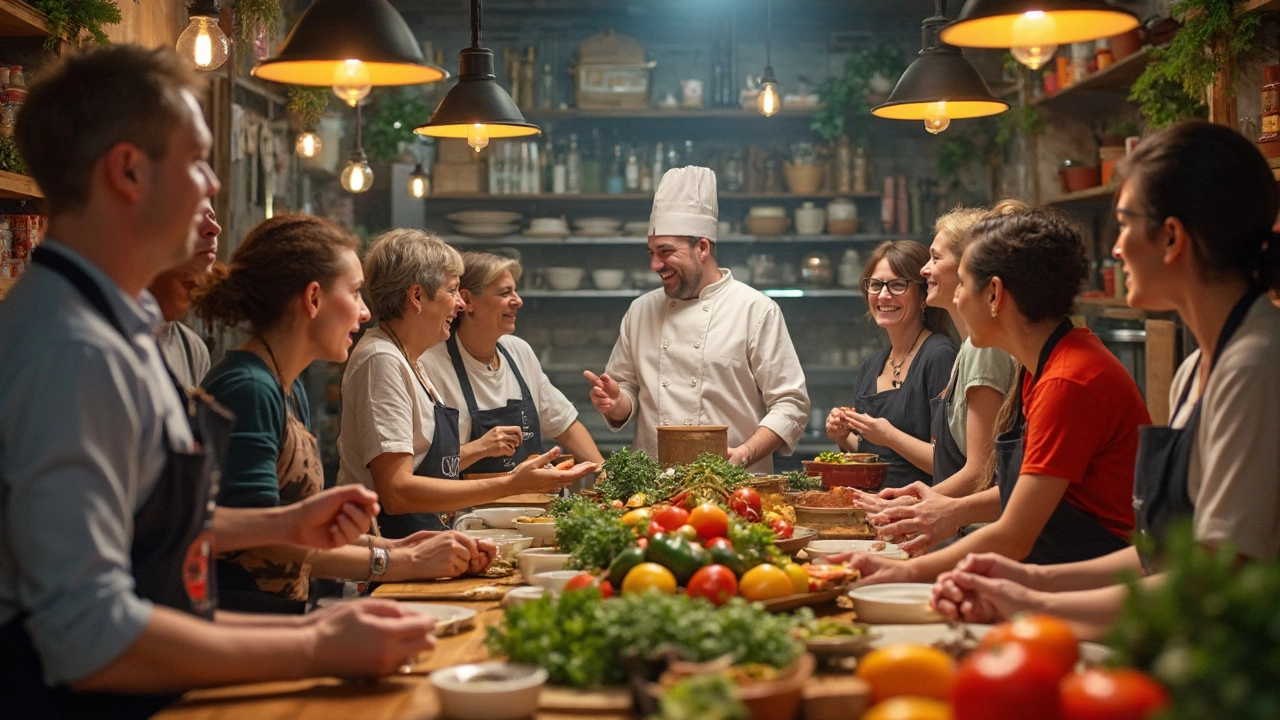Cooking Lessons: Find the Right Class and Start Cooking Today
If you’ve ever stared at a recipe and felt clueless, you’re not alone. A good cooking lesson can turn that frustration into confidence. Below you’ll get the basics you need to pick a class, what to expect, and how to keep learning after the first session.
What Types of Cooking Lessons Are Available
Cooking lessons come in many flavors. Some schools offer one‑hour workshops that focus on a single dish, like homemade pasta or sushi rolls. Others run multi‑day courses that cover whole cuisines – think Italian week or Thai immersion. If you prefer a social vibe, look for group demos where you cook side‑by‑side with other beginners. Private lessons are another option; a chef comes to your kitchen and tailors the menu to your skill level.
Online classes have exploded recently. Platforms let you stream live demos or follow pre‑recorded videos at your own pace. The biggest advantage is flexibility – you can pause, rewind, and practice without a schedule. Some sites also provide ingredient kits that arrive at your door, so you don’t have to hunt for exotic items.
Don’t forget specialty workshops. Knife skills, plating, and food safety are short sessions that add precision to your cooking. If you love baking, look for pastry schools that teach dough handling, tempering chocolate, or decorative icing. These niche lessons sharpen specific techniques without overwhelming you with whole‑meal planning.
How to Choose the Best Class for You
Start by setting a clear goal. Want to impress on a date? A short “date‑night menu” class might be perfect. Dreaming of opening a food truck? Look for business‑focused culinary programs that cover menu design and cost control.
Next, check the instructor’s background. A chef with years of restaurant experience will share real‑world shortcuts, while a teacher with a hospitality degree may focus on theory. Read reviews or ask for a trial session to gauge teaching style. Some people need step‑by‑step guidance; others thrive on creative freedom.
Consider the setting. A kitchen studio offers professional tools you may not own, like a stand mixer or soufflé oven. Home‑based lessons let you practice on your own equipment, which can be more comfortable for first‑timers. If you’re worried about travel, prioritize nearby locations or virtual options.
Price matters, but it’s not the only factor. Compare what’s included: ingredient costs, take‑home recipes, or follow‑up support often add value. Some schools give you a discount on future classes if you sign up for a series.
Finally, think about the learning pace. If you’re a busy professional, a weekend workshop fits better than a week‑long intensive. If you have time to experiment, a longer course lets you absorb skills slowly and practice between sessions.
Once you’ve chosen a class, come prepared. Bring a notebook, ask questions, and don’t be afraid to make mistakes – that’s how you improve. After the lesson, repeat the recipes at home, tweak flavors, and share the results with friends or family. The more you practice, the faster the confidence builds.
Cooking lessons aren’t just about learning recipes; they teach you how to think about food, timing, and flavor balance. With the right class, you’ll move from hesitant “I’m not a chef” to “I could open my own pop‑up”. Take the first step today, and let a simple lesson open a world of tasty possibilities.
